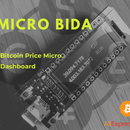Introduction: 12000 MA/h Power Bank Dual USB 2.1A for 15 $
This project stars for a bit with my friends. Make a really BIG attery pack for 15,00 $ or less. I have found a great circuit online that have 2 USB that have a power of 2.1 Amps. This board get a ridiculous price on Amazon: http://amzn.to/2mykbsJ.
The Fx-608 circuits provide to charge the batteries, and also have 2 USB ports and a little bright led. The circuit shows the state of the battery pack in a little and clear LCD screen. The blue screen shows the % of charge and also show the power of output current. I use this battery pack with the iPad, the iPhone, the Raspberry Pi and also with a little 5V iron welder.
All the materials are:
Step 1: Print and Assembly the Model
First of all, download the model and print it. If you don't have a 3D print, you can use the 3D Hub community. In the community, you can find the 3D print nearest to you, and print your model.
After that, you can prepare the case. Use the iron tape for connecting all the batteries. Connect the battery pack to the board. After plugging the micro USB into the board for reset the value of batteries. Well, all it's OK!
Try to charge your phone...or switch on the little-led light with twice touch on the button.
IMPORTANT NOTICE
The circuits work at maximum with 4.1 Volts. If you put plus volts on the circuits you burn it.
Each battery gets 4.2 Volts of max current. If you use 4 18650 batteries you must connect all the batteries in parallel. For connect the batteries in parallel, connect all the + together, and all the - together. See the figure.
When you connect all the batteries in parallel, you have 12000 mA/h 4.2 Volts max.

Participated in the
Microcontroller Contest 2017













